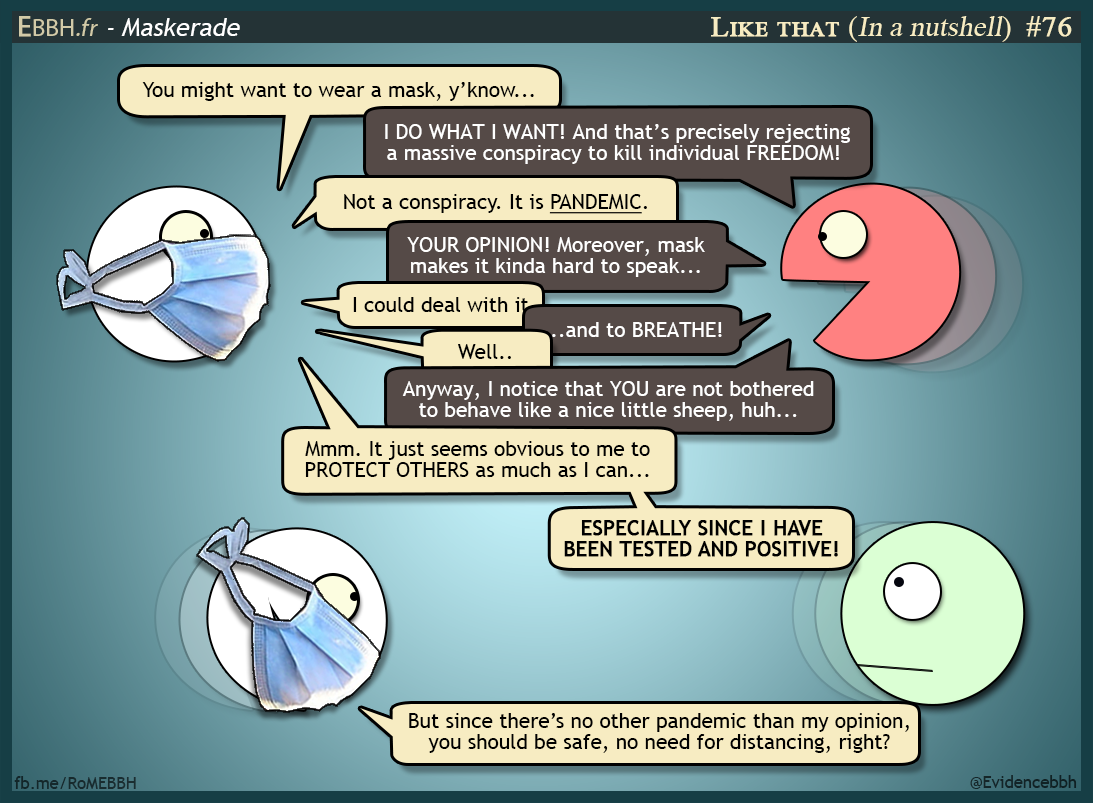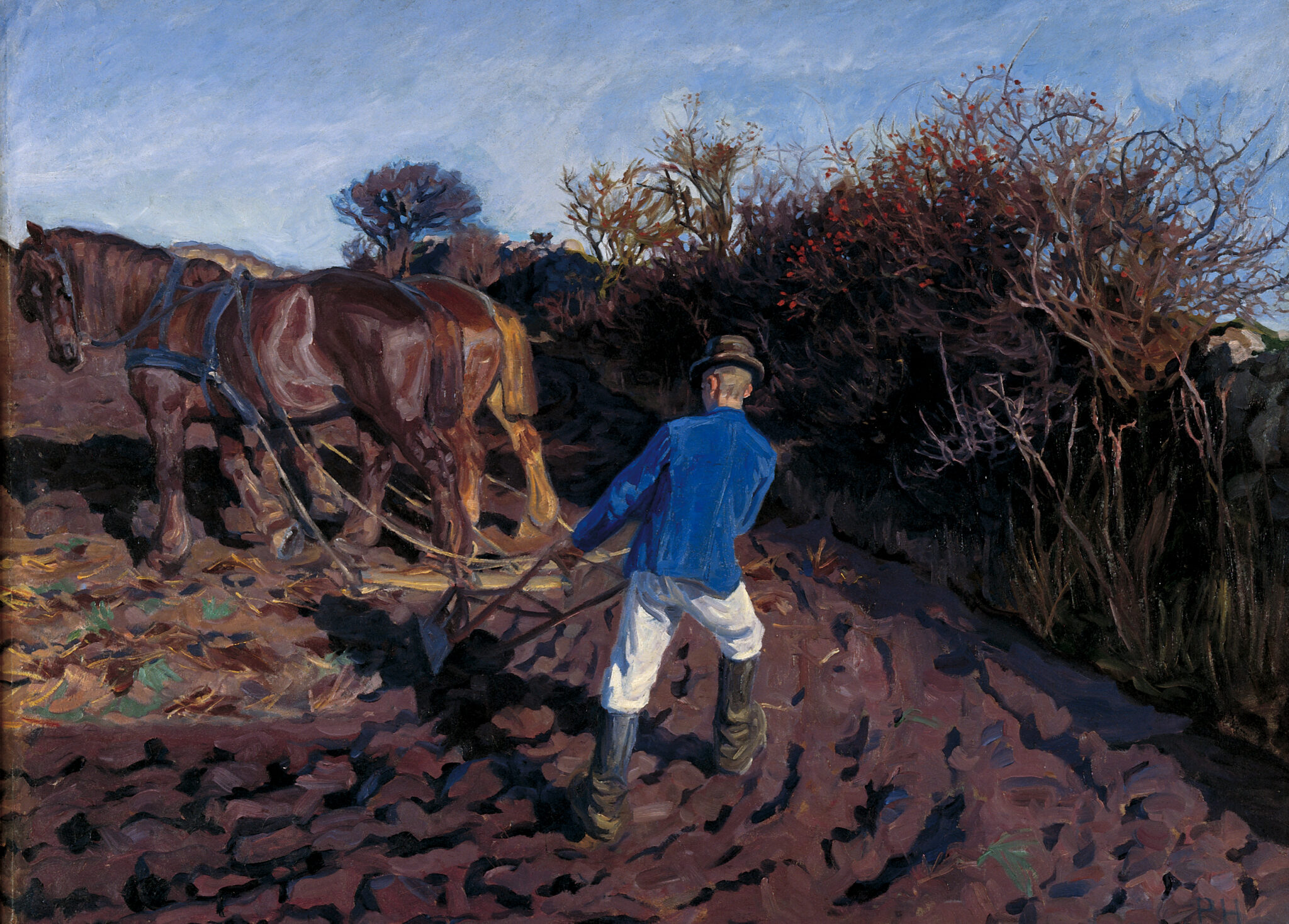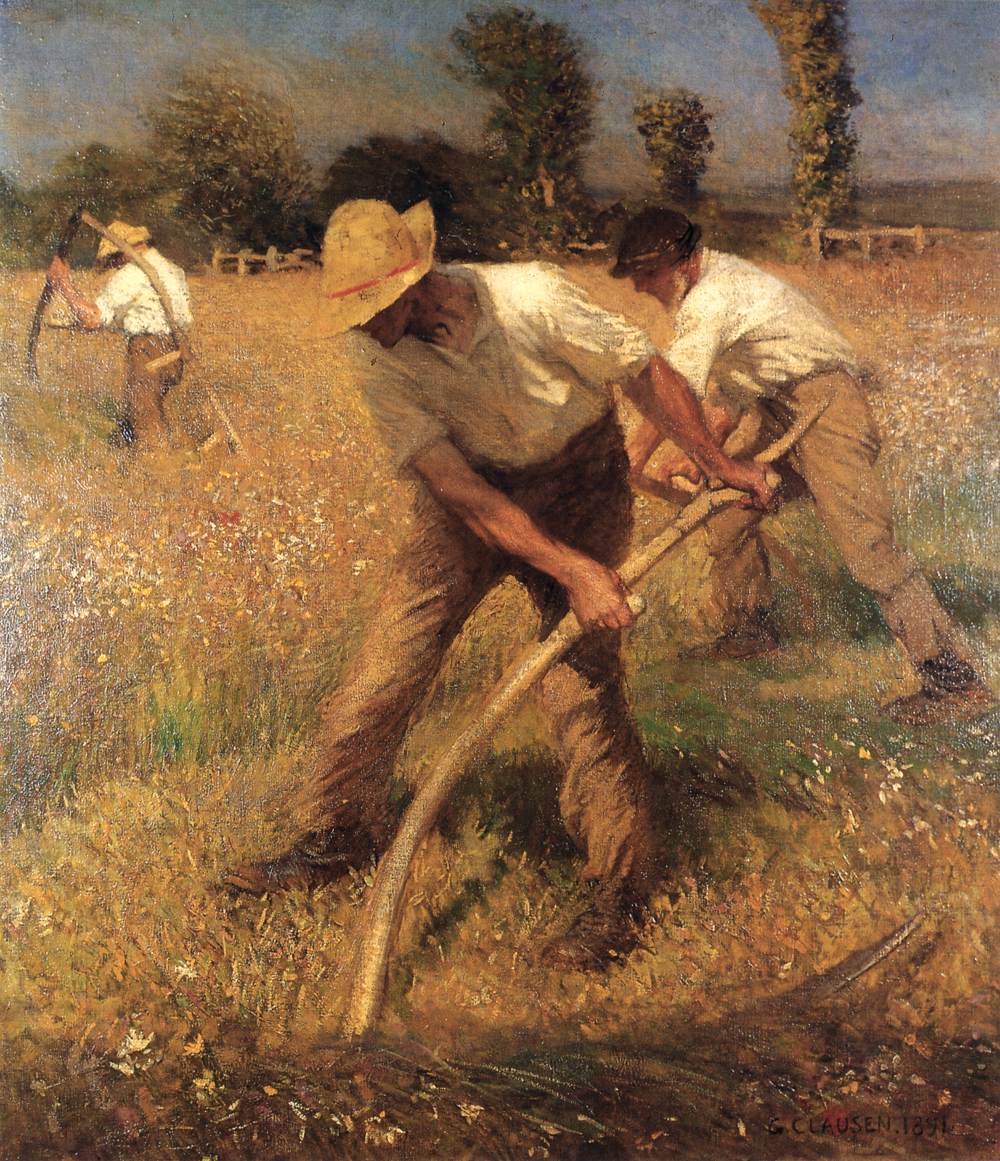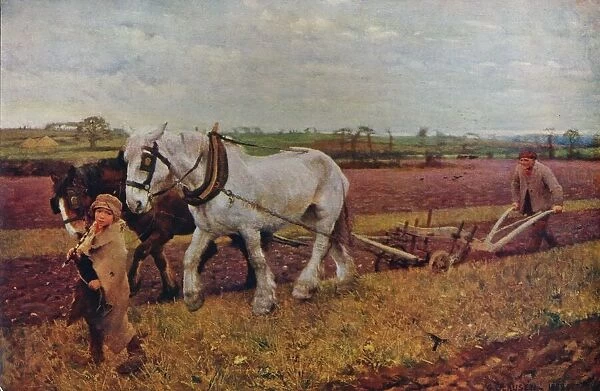|
You
can also view the message online
|
|||||||||||
 Châtenay-Malabry (FR - 92290), 2 November, 2020 EFITA newsletter / 957 - European Federation for Information Technology in Agriculture, Food and the Environment Do not miss the Virus Jokes in English and French > Coronavirus 4 Coronavirus 3 Coronavirus 2 Ant joke Coronavirus 1 > Virus et autres sujets Virus 6 Virus 5 Virus 4 Virus 3 Virus 2 Virus 1 > Les dernières histoire de l'oncle Paul (Jamet) The informatique-agricole.org site now offers you the possibility of subscribing the RSS feeds of its two newsletters See RSS feeds to implement to ensure that you continue to receive this newsletter To unsubscribe this newsletter, please contact me directely: guy.waksman(a)laposte.net if this link Unsubscribe does not work. Please note that I changed the presentation of the links that are embedded in the name of the web service. 
To correspond with me (GW), please use this address: guy.waksman(a)laposte.net To subscribe the efita newsletter (please ask your friends and colleagues to test this link) Efita Newsletters subscription Weekly newsletters about ICT in Agriculture in English and French Both newsletters have around 14000 subscribers. >>> Last weekly EFITA Newsletters in English (created in 1999) Efita Newsletters >>> Last weekly AFIA Newsletters in French (created more than 20 years ago in 1997) Afia Newsletters >>> Statistics for the last efita newsletter >>> Last issue of the afia newsletter >>> Last available satistics for the afia newsletter The Nobel Peace Prize for 2020 The need for international solidarity and multilateral cooperation is more conspicuous than ever. The Norwegian Nobel Committee has decided to award the Nobel Peace Prize for 2020 to the World Food Programme (WFP) for its efforts to combat hunger, for its contribution to bettering conditions for peace in conflict-affected areas and for acting as a driving force in efforts to prevent the use of hunger as a weapon of war and conflict. See nobelprize.org Maskerade
Explore IoT for Field Operations and More at AgGateway's 2020 Virtual Annual Conference! November 16-19 - Virtual Meeting Highlights: > IoT for Field Operations Data: Two sessions that discuss the use of IoT agriculture field data, and challenges and business opportunities for successful application. Open discussion of pinch points and the challenges organizations are facing. > A report on precision farming interoperability efforts in Europe, and their global applicability. > Soil and Laboratory Testing projects in Latin America. > Keynote speaker Iain Lennon, Director of Product Management for Proagrica, speaks to data and analytics solutions that combine data from agronomic, enterprise and supply chain systems. > General session speaker Dan Kelly, founder of The Negotiator Guru, on advanced negotiation and IT strategic sourcing, and the changing role of technology in the business world. > Additional General Sessions, including an update from AgGateway leadership on the organization's 2021 and 5-year plans. > Much more! What drove the COVID misinformation ‘infodemic’? By Joan Conrow The Cornell Alliance for Science has just released a media analysis that identifies the hot topics and major players in the misinformation “infodemic” that has accompanied the global COVID-19 pandemic. The study, which evaluated 38 million articles published by English-language, traditional media worldwide, identified over 1.1 million news articles that disseminated, amplified or reported on misinformation related to the pandemic. The misinformation conversation was dominated by 11 primary topics, ranging from conspiracy theories to attacks against Dr. Anthony Fauci, director of the National Institute of Allergy and Infectious Diseases. See allianceforscience.cornell.edu Good
old days (?????): Pløjemanden vender, Peter Hansen,
1900-1902, Faaborg Museum (DK)
Who will win the Best Field Robot Concept Award? The international agricultural robot event FIRA and Future Farming magazine will award a prize for the best field robot concept of 2020. Expert Opinion: Social considerations of on-farm innovation Do we consider the social impacts of agricultural innovation with enough frequency? See futurefarming.com Policy: South Australia wants more producers to invest in agtech Agtech demonstration farms and start-up hubs are part of South Australia's AgTech Strategic Plan. See futurefarming.com How did we the future yesterday?? See the incredible collection developed by Alain Fraval Machine Vision is Key for Agriculture 4.0 Did you know that machine vision is part of many automation and robotics applications used in agriculture? The software products of MVTec enable innovative technologies and best-in-practice solutions. Read more about farming machinery, greenhouse automation, precision farming, livestock farming, and more Soil health: Best farming practices for soil health vary by region Locally sourced data will help farmers use the best practices for their land. See futurefarming.com
Weed control: Nufarm and Crop.Zone use electricity to control weeds Nufarm and Crop.Zone partner to offer European growers an electronic weed control system in 2021. See futurefarming.com Leveraging big data for better sweet potatoes When it comes to growing sweet potatoes, North Carolina is a superstar – growing more than the next three US states combined. Now an interdisciplinary team from North Carolina State University (NC State), SAS, and Intero Life Sciences are partnering for a three-year project that will use artificial intelligence to make sweet potatoes even more profitable. The big data project is part of the North Carolina Plant Sciences Initiative (NC PSI), which aims to bring together academia, government, and industry to drive vital research and innovation to solve the world’s agricultural challenges. See agfundernews.com With $1.2m in fresh funding, SpaceSense sees satellite data as agtech’s next frontier, AFN, by Richard Martyn-Hemphill For every satellite launched up into space, there’s terabyte after petabyte of data being beamed back down. And with the latest generation of satellites even smarter and being dispatched skyward by the dozen, those petabytes will soon become exabytes, zetabytes, or even yottabytes. So, how on Earth do you collect and crunch such a celestial deluge of data? This is where some remote sensing start-ups eye an opportunity: Leave the complex, capital-intensive satellite development to governments or Muskian moguls. Instead, find ways of making existing satellite data more useful and accessible through automated pattern recognition. See agfundernews.com FBN launches on-farm R&D network for biologics to perform real-world trials, AFN, by Lauren Stine The biologics space offers a lot of promise but for some, it’s riddled with doubt and skepticism. US agribusiness marketplace Farmers Business Network (FBN) is hoping to move the needle toward faster development and wider adoption of these alternative inputs. FBN’s recently unveiled Biological On-Farm R&D Network will connect developers of biological ag inputs directly with farmers to perform trials in full-scale testing environments. See agfundernews.com How Does Precision Mapping Empower Agribusinesses to Flourish? Maps have been critical assets for farmers throughout history. Landowners and farmers know their fields like the backs of their hands. With the addition of digital maps, agribusinesses gain a competitive advantage by knowing their land precisely based on geodata, not just experience. Agricultural field mapping is an essential part of precision farming. Mapping technologies help farmers to find the exact locations of all crops on their farms and navigate across the area. They also can display location data on any crops. Apart from knowing the exact locations of crops, growers and agribusinesses can get a ton of valuable data on soil, product origins, moisture, and nutrient levels. This article will answer the following questions for those working with agricultural holdings, small farmers, AgTech solutions providers, and product manufacturers and suppliers: - How does precision mapping contribute to solving agribusiness challenges? - What types of maps can agribusinesses use? - How can you compile the most accurate maps? - What are the real-life applications of mapping in agriculture and what benefits can they bring? Discover the most prominent use cases of precision mapping and how to compile agriculture maps for unique needs See intellias.com Good old days (?????): Painting by Léon Augustin L'hermitte (FR) FBN launches on-farm R&D network for biologics to perform real-world trials, AFN, by Lauren Stine The biologics space offers a lot of promise but for some, it’s riddled with doubt and scepticism. US agribusiness marketplace Farmers Business Network (FBN) is hoping to move the needle toward faster development and wider adoption of these alternative inputs. FBN’s recently unveiled Biological On-Farm R&D Network will connect developers of biological ag inputs directly with farmers to perform trials in full-scale testing environments. See agfundernews.com Carbon capture 'moonshot' moves closer, as billions of dollars pour in, by Oliver Milman in New York While some say CO2 capture is part of the problem, big projects are being invested in as a part solution to the climate crisis As the world dices with the climate emergency, businesses and governments are starting to push funding towards technology that aims to trap planet-heating gases rather than let them saturate the atmosphere. Carbon capture is a controversial idea, attacked as a costly distraction from stopping emissions occurring in the first place. But last month, the International Energy Agency said it was an imperative part of the mix, warning that it would be “virtually impossible” for the world to hit climate targets without capturing and storing emissions generated from factories, power plants, transportation and other sources. The transition to renewable energy, such as solar and wind, would not cut emissions in time, the IEA said. …/… See theguardian.com Good old days (?????): La moisson par Léon Augustin L'hermitte
Can electric vehicles ever truly become green? By Jean-Paul Oury Electric Vehicles (EVs) are widely regarded as the future of transportation, an image avidly curated by Tesla. Central to the argument is the idea that EVs drastically reduce CO2-emissions compared to conventional combustion engines, thanks to the use of innovative batteries. Once again, Tesla is leading the charge on that front. The company is currently in talks with BHP, the world’s largest miner, to increase the supply of nickel – a key metal in e-battery production that Tesla CEO Elon Musk is envisioning as the primary metal to be used in his batteries. …/… Although marketed as “zero emission” vehicles – especially by Tesla – EV’s are currently far from the green solution they’re touted as. After the manufacturing process and batteries are taken into account their carbon footprint is in reality little better than that of gas guzzlers. The scale tips further if the extraction of the necessary raw materials is considered, a point succinctly made by French journalist Guillaume Pitron, who highlights the paradox that an EV requires three to four times more energy – and thus produces more carbon – than a conventional vehicle before it has even driven the first kilometre. Yet mining for the metals required in e-battery production has far-reaching environmental impacts beyond carbon emissions, ranging from pollution to destruction. Nickel is no exception, given that easily minable deposits are already being fully exploited. This means that increasing output of nickel is a highly problematic endeavour – even more so since Musk’s call on mining companies to engage in “environmentally-friendly nickel mining at high volume” has considerably upped the ante for sustainable supply. …/… See europeanscientist.com Good old days (?????): Harvester Drinking from a Flask or Thirst 1905 - by Leon Augustin Lhermitte (FR) How America Helped Defeat the Coronavirus... Just not in the United States We’ve all heard how U.S. leadership failed its citizens with its pandemic response. We had the playbooks, we had the money, we had the experts. We just … didn’t use them. But it turns out, other countries did. Because U.S. public health leaders and scientists have been planning for a catastrophe just like Covid-19 for decades, and, in typical American fashion, we didn’t just write the pandemic playbook — we exported it around the world. .../... See NYT
Tequila shots Paudie goes into a bar and orders seven shots of tequila and one Guinness. The barman lines up shots and goes to get the Guinness. When he comes back with the pint, all seven shots are gone. The barman says: “Wow! You sure drank those fast.” Paudie explains: "You would drink fast too if you had what I have.” The barman asks: “What do you have?” The guy reaches into his pocket and says: “Fifty cents!”. The distribution of this efita newsletter is sponsored by vitisphere.com Please, contribute to the content of your efita newsletter, and advertise your events, new publications, new products and new project in this newsletter. Without your support, it will not survive! Contact: Guy WAKSMAN E-mail: guy.waksman(a)laposte.net To read this newsletter on our web site See Afia The archives of this newsletter See Afia About the EFITA mailing list You can use the efita moderated list (> 15000 subscribers) to announce any event / product / web site / joke (!) related to IT in agriculture, environment, food industry and rural areas. If you want to subscribe a friend, please fill in his form. If you do not wish to receive our messages, please fill in the following form... |









.jpg)




